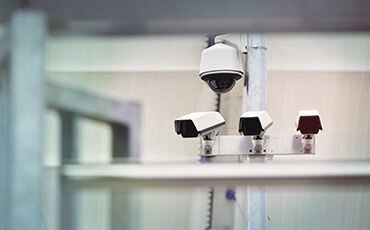But there are steps food and beverage manufacturers can take to minimize the risk of contamination and theft, protect their brands and comply with new food defense requirements in the Food safety Modernization Act (FSMA), says one security expert.
Don Hsieh, director of commercial and industrial marketing at Tyco Integrated Security, was speaking to FoodNavigator-USA as firms await more detailed guidance on this aspect of FSMA from the FDA.
Hi-tech food defense: Virtual hot zones

Bioterrorism, aside, meanwhile, many of the strategies employed to tackle deliberate attacks on products and supply chains are equally effective at preventing unintentional food safety lapses, from cross contamination of allergens to sub-par quality control protocols, he says.
One particularly exciting technology that can improve security and encourage improved allergen management involves setting up virtual ‘hot zones’ in factories whereby staff not wearing radio frequency ID tags that authorize them to operate in this zone will set off security alerts.
Video-based approaches - whereby cameras spot certain movements or colors that are not permitted in a sensitive area and set off alerts if unauthorized staff dressed in the wrong color clothing enter this restricted area - are also being trialed, he revealed.
“Let’s say everyone authorized to handle nuts is dressed in blue. If someone comes in wearing red, an alert is generated.”
These approaches are ideal for areas of a factory that are not physically sectioned off (eg. mixing areas) and firms can’t use standard personnel access controls on doors, he says.
Remote video auditing
Meanwhile, remote video auditing is increasingly being used to improve compliance with company safety, quality or other procedures, as well as uncovering malicious activity, he reveals.
Typically, for example, staff will be on their best behavior during physical audits where they are completing tasks in front of an inspector, he points out. But what about the rest of the time?
By videoing them day to day, and then looking at random samples of them in action to see if they are correctly following procedures on the 364 days of the year when they are not being physically audited, firms can identify areas for improvement and significantly improve compliance all year around.
“Compliance at some firms can go up from 70-80% to 100% using these techniques.”
Stop that truck! High tech security on the move
High tech approaches are also improving security on the road, he reveals.
“In 2010 and 2011, food was the number one incident of cargo theft across all industries. It used to be more things like high value electronics, but now they have better security, serial numbers and so on, so thieves might only get, say 30c on the dollar for them, whereas they can get 70c on the dollar on a branded food product.”
But why is theft a potential food safety - as well as a financial - issue? Lots of reasons, he says, notably that thieves “are not worried about keeping your product at the right temperature, or paying any attention to avoiding cross contamination during storage”.
He adds: “We’ve tied up with a firm called Magtec that has developed solutions that require drivers to enter in access codes to move a vehicle [so if a driver leaves his vehicle idling a truck stop and it is stolen, the thief would not be able to drive off with it].
“And if the driver is threatened and forced to reveal the access code, he can still set off a panic alert that will alert the authorities and slow down the truck to a gradual stop.”
The most vulnerable points in supply chains

According to the FDA, food defense is the effort to “protect the food supply against intentional contamination due to sabotage, terrorism, counterfeiting, or other illegal, intentionally harmful means”, and is distinguished from food safety, which it describes as efforts to prevent unintentional contamination of food products (eg from pathogens such as E. coli and salmonella).
The FDA recently conducted vulnerability assessments across all food categories and identified four areas where firms need to up their game when developing site specific food defense and hazard analysis risk-based preventive controls plans (written plans identifying potential food safety hazards and controls to minimize them).
These are mixing, grinding and re-work; the ingredients staging process; bulk liquid recovery and loading; and storage; all of which are areas where mistakes or deliberate tampering can affect significant amounts of finished products should contamination occur.
How vulnerable is your food production facility or process? Click here to find out using FDA’s vulnerability assessment tool.
Click here for details of Tyco's food defense capabilities, plus meat and dairy case studies.
